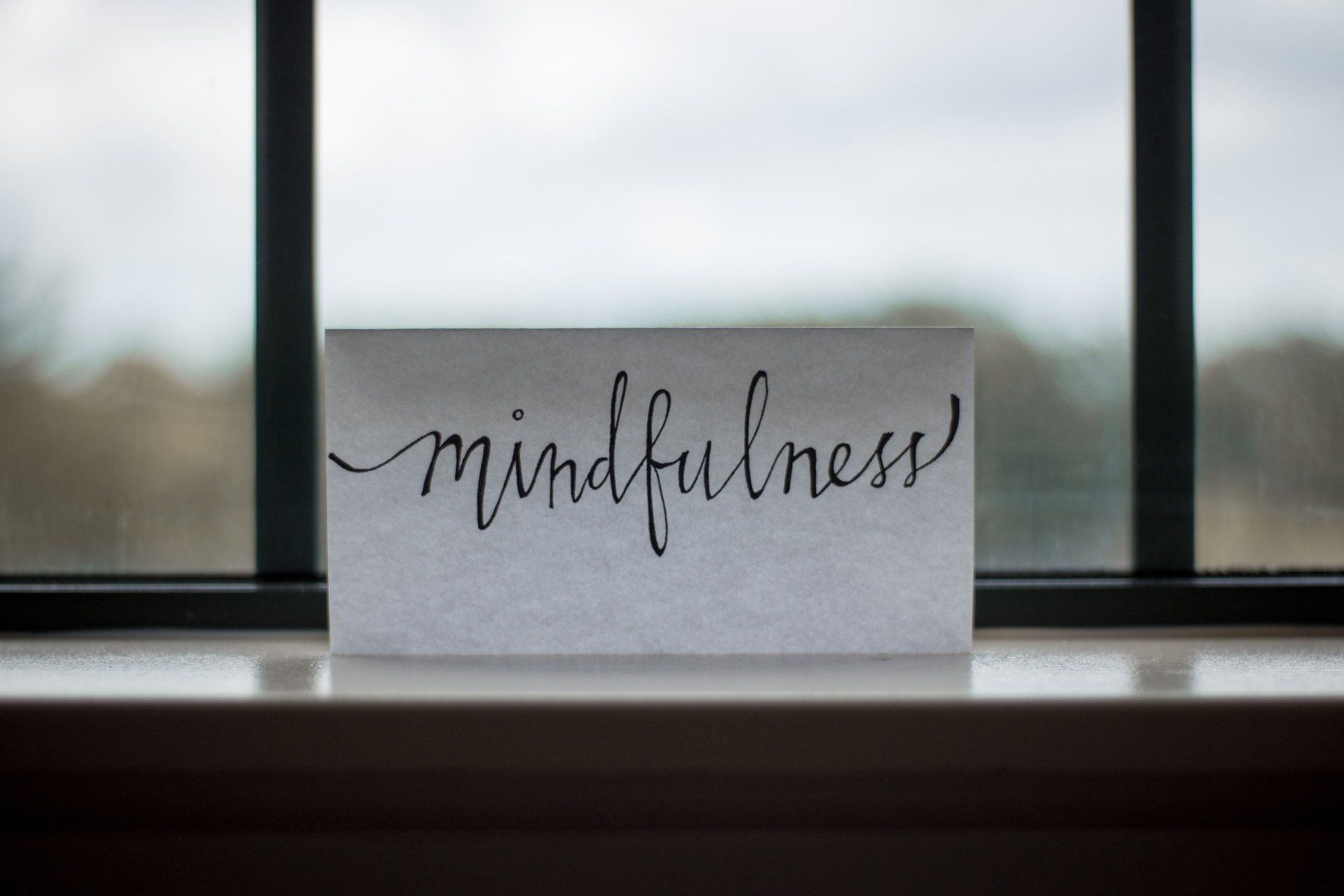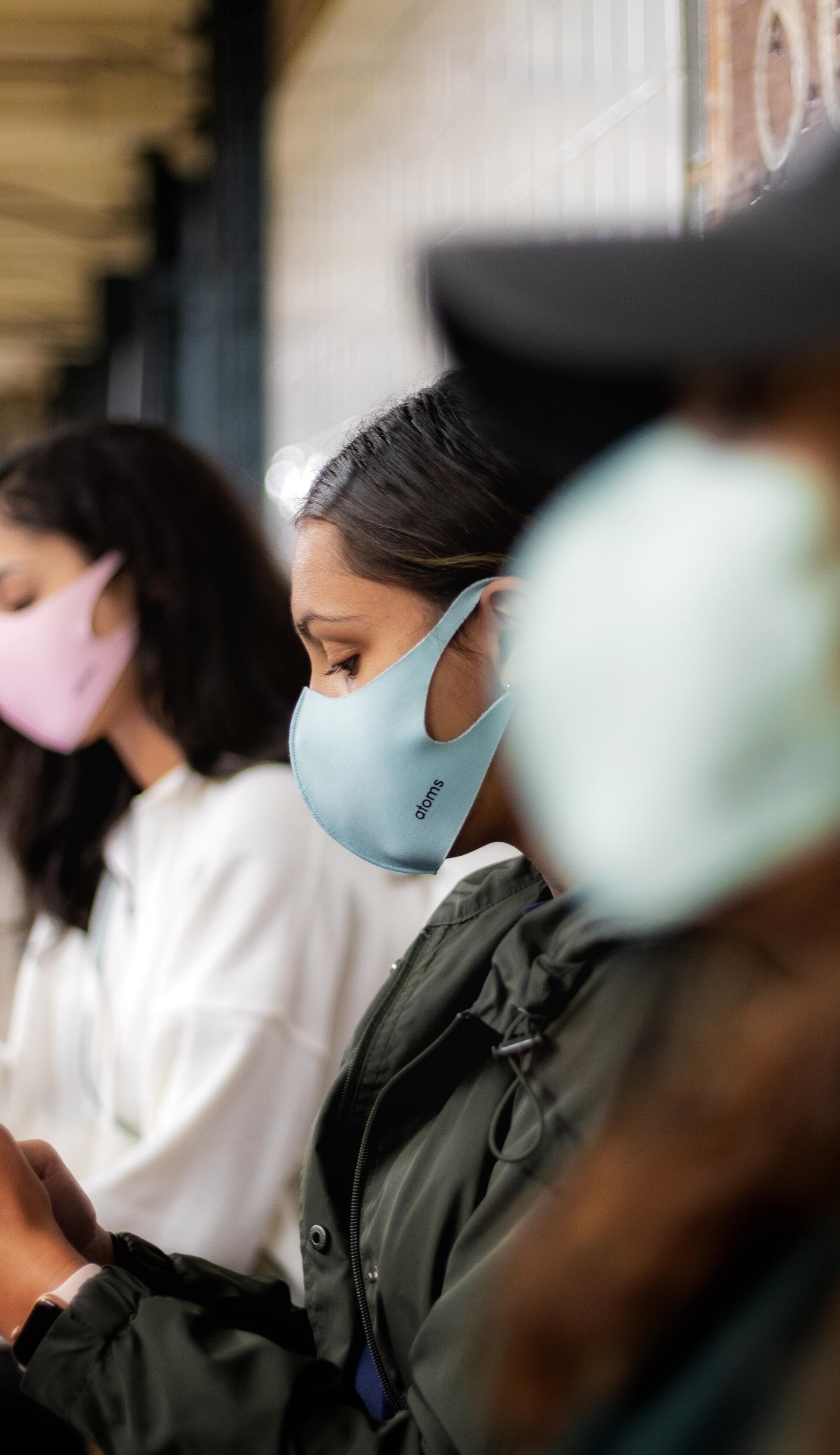Healthy Ways to Handle Life's Stressors
American Psychological Association • March 18, 2021
When stress becomes unmanageable, try these evidence-based tools to tackle it in healthy ways

Stressful experiences are a normal part of life, and the stress response
is a survival mechanism that primes us to respond to threats. Some stress is positive: Imagine standing in front of a crowd to give a speech and hitting it out of the park. Stressful? Certainly. But also challenging and satisfying.
But when a stressor is negative and can’t be fought off or avoided — such as layoffs at work or a loved one’s medical crisis — or when the experience of stress becomes chronic, our biological responses to stress can impair our physical and mental health.
Fortunately, there are many evidence-based tools to help combat the negative effects of stress in healthy ways. They recommend that you:
Try to eliminate the stressors:
Whether or not you experience an intolerable level of psychological stress depends on the intensity of the situation and also the person experiencing it. How you perceive and think about a stressor can also make a big impact on how you respond. It’s not always possible to escape a stressful situation or avoid a problem, but you can try to reduce the stress you are feeling. Evaluate whether you can change the situation that is causing you stress, perhaps by dropping some responsibility, relaxing your standards or asking for help.
Cultivate social support:
Strong social support can improve resilience to stress.1 Reach out strategically. Some friends or family members may be good at listening and sympathizing. Others might excel at practical help, like bringing over a home-cooked meal or covering an hour of child care. Giving support can also increase positive emotions and decrease negative emotions.2 Just make sure your relationships stay in balance. A friend who requires support but never gives it may increase your stress level.
Seek good nutrition:
When confronted with a stressor, the central nervous system releases adrenaline and cortisol, which affects the digestive tract among other physiological changes. Acute stress can kill the appetite, but the release of the hormone cortisol during chronic stress can cause fat and sugar cravings. Research also suggests that high cortisol combined with high sugar consumption may prompt the deposition of fat around our internal organs3 — visceral fat that is associated with cardiovascular and metabolic diseases. A diet high in a variety of nutrients can both protect health and provide more physical energy to deal with challenges. No need to go vegan or swear off cookies —just aim to consume a rainbow of fruits and vegetables as part of your daily diet. Avoid using substances such as alcohol to dampen the stress response since substances do not solve the root of the problem and can have serious health effects.
Relax your muscles: Because stress causes muscles to tense, being stressed out can create tension headaches, backaches and general fatigue. Combat stress and these symptoms with stretches, massage or warm baths. Or try progressive muscle relaxation, a method that has been shown to reduce anxiety and improve overall mental health.4 To practice progressive muscle relaxation, get in a comfortable position and choose a muscle group, like your lower leg muscles (most practitioners recommend starting with the lower body and working your way up). Inhale and contract the muscles for five to 10 seconds, then exhale and release the muscles suddenly. Relax for 10 or more seconds and then move on to the next muscle group. Another option is passive progressive muscle relaxation. This technique is similar to progressive muscle relaxation but skips the tensing step. Instead, simply picture each muscle group one at a time and focus on relaxing that portion of the body.
Meditate:
A strong body of research shows that mindful meditation can reduce psychological stress and anxiety — even short-term mindfulness meditation programs work.5 To get started, set aside five minutes in a quiet place to sit and breathe. Focus on the present moment; if stray thoughts intrude, acknowledge them and then let them go. Don’t judge yourself for any mental wavering. Gently refocus and bring the attention back to the present moment.
Protect your sleep:
Daytime stress affects nighttime sleep.6 Making matters worse, losing shuteye can affect both cognition and mood. How to sleep better? Try to have a consistent sleep routine that allows time to wind down before lights out. Meditation and relaxation can help with insomnia.7 Also, avoid caffeine and alcohol in the late afternoon and evening. Put down your screens, as blue light can suppress the sleepy hormone melatonin (and checking social media may ramp up your emotions.) Finally, move your body during the day: A large body of research suggests that physical activity can improve sleep, especially for middle-aged and older adults.8
Get physical:
Brisk movement can not only improve sleep, it can directly combat stress. In one study, working adults who participated in moderate physical activity had half the perceived stress as working adults who did not participate.9 Physical activity may also cancel out some of the negative effects of stress, including the impact of stress on the immune system.10 Adding physical activity needn’t be expensive or complex: A brisk 30-minute walk or a dance session in the living room can do the trick.
Take a moment in nature:
Studies conducted in multiple countries have found that green space improves mood.11 Even nature videos can speed the recovery from stress compared with videos of urban scenes.12 Taking a moment to notice nature — even in the form of a bustling city park — can refocus and calm your mind.
Keep your pleasurable activities:
When life gets overwhelming, people often drop their leisure activities first. But cutting yourself off from pleasure can be counterproductive. Even when time is tight, look for opportunities to do something for yourself, whether that means reading a novel, singing along to your favorite tunes or streaming your favorite comedy on Netflix. Humor and laughter can benefit both mental and physical health.13
Reframe your thinking:
One of the most research-supported treatments for stress and anxiety is cognitive behavioral therapy, or CBT. At the root of this therapy approach is the understanding that our thoughts influence our emotions, which in turn influences our behaviors. Reframing your thoughts around a stressor can help manage your emotions, reducing feelings of stress.14 Some tips: If you feel yourself spiraling into imagining worst-case scenarios, stop and put your mind elsewhere. Set realistic expectations for yourself. Strive for acceptance of situations outside of your control.
Seek help: If you feel overwhelmed and self-help isn’t helping, look for a psychologist or other mental health provider who can help you learn how to manage your stress effectively. He or she can help you identify situations or behaviors that contribute to your stress and then develop an action plan to change the stressors, change your environment and change your responses.
Acute Versus Chronic Stress
The experience of stress can be either acute or chronic. Acute stress usually occurs in response to a short-term stressor, like a car accident or an argument with your spouse. Acute stress can be very distressing, but it passes quickly and typically responds well to coping techniques like calming breathing or brisk physical activity.
Chronic stress occurs when stressors don’t let up. The roots of chronic stress can vary widely, from situations people can control or avoid (such as having a toxic friendship) to difficulties that are hard to escape (poverty, racism or other discrimination). Because people respond differently to stressful circumstances, a situation that one person might find tolerable can become a source of chronic stress for another.
Chronic stress can damage both mental and physical health. Being chronically stressed may leave you feeling fatigued, sap your ability to concentrate and cause headaches and digestive difficulties. People prone to irritable bowel syndrome often find that their symptoms spike with psychological stress.15 Though acute stress can heighten certain immune responses, the wear-and-tear of chronic stress is bad for the immune system.16 Chronic stress can also affect cardiac health, with multiple studies finding a link between chronic stress and the development of coronary artery disease.17
Article by The American Psychological Association
gratefully acknowledges the assistance of Beverly Thorn, PhD, in developing this fact sheet.
For list of articles References Click here

Mindfulness encompasses a variety of definitions although most are similar in concepts. Mindfulness is described as an awareness that arises from purposely paying attention in the present free from any judgements. Mindfulness is a state of awareness of ones emotions, thoughts, and sensations when each occurs. A third definition of mindfulness is a nonjudgmental state of awareness of present experiences. Various interpretations exist dependent on the context in which mindfulness is being examined. For example, mindfulness can be examined in improving emotional regulation and as a coping tool for stress management. Mindfulness is being in the present moment in ones body in a fully conscious state, aware of ones own experiences without judgement or narrative- just being in the moment in the here and now with an acceptance of how things are; being aware of our own thoughts, emotions, sensations without being caught up in them- an outside observer of self with an awareness of the moment. Mindfulness can be used throughout the day when walking, eating, and whenever feeling emotionally “charged” to step back and observe internal experiences. Yoga, meditation, and breathing are a few ways to cultivate mindfulness. Being mindful allows for intentional actions and responses rather than living on autopilot without being aware. The benefits of mindfulness are plentiful, and a regular practice is beneficial for enhancing wellness. Being able to stop and really get into the here and now and out of automatic unconscious living enhances feelings of well-being and an ability to respond more effectively with emotional control. Mindfulness can improve experiences and interpersonal relationships alike. Mindfulness is Intentional Living. Give it a try and see what happens. How do you define mindfulness? How do you cultivate mindfulness in your daily life?

Each day in the United States, an average of 3.1 million COVID-19 vaccines are going into people’s arms. According to an April 9 White House briefing, a quarter of the country's adults are now fully vaccinated. The pandemic is not yet over, but vaccination could soon yield a much more normal life, especially for those who have been vaccinated. The Centers for Disease Control and Prevention, for example, now recommends that fully-vaccinated people can visit with each other indoors and travel without quarantining. But for many, reopening comes with its own set of anxieties. According to APA's Stress in America polling, around half of people say they feel uneasy about readjusting to in-person interaction post-pandemic. Ellen Hendriksen, PhD, a clinical psychologist at Boston University's Center for Anxiety and Related Disorders and author of How to Be Yourself: Quiet Your Inner Critic and Rise Above Social Anxiety , is an expert at clinical strategies for calming anxiety. She spoke to APA about what's driving post-pandemic anxiety and how psychologists can best help. What do you think is driving the anxiety many people are feeling about reopening? Anxiety is driven by uncertainty. There is so much uncertainty right now, from the vaccine roll-out to society reopening to the new normal workplace to the virus and the variants themselves. Every day there is more evidence that vaccines keep us and people around us safe, but there are lingering questions about how long immunity lasts, how susceptible kids are to COVID-19, and when they will get vaccinated. Nobody alive today has ever emerged from a global pandemic into a digital world and navigated this before. We're making it up as we go along, so of course we're anxious. Here at the Center, we have the longest waitlist in our 25-year history. So many people are emerging from the pandemic feeling exhausted, burned out, anxious, or depressed. Collectively, our resources are low, which makes it harder to navigate the layers of uncertainty. How can people handle social anxiety and awkwardness around different levels of comfort as places reopen? The fact that reopening is a moving target makes it difficult to align with other people. You and your bubble might be ready to dine in at a restaurant or get on a plane, but the family next door might have a child who is immunocompromised and is living as they were in January. There are more variables to manage compared with before the pandemic. Plus, social anxiety is driven by avoidance, and we've all been avoiding social interactions for the better part of a year. The fact that we're all rusty is going to make us feel wobbly as we re-enter. It's OK to say we don't know how to do this, and it's OK to ask people what they're comfortable with. That normalizes the uncertainty and awkwardness, and it's quite validating to say, “What are we doing?” or “How does this work?” It can help you feel like you are united with the other person against this larger problem, as opposed to negotiating one against the other. This is a strategy borrowed from couples therapy, where it is often highly effective. How can people feel more comfortable with re-entry? There's one question I've been getting over and over from people who struggle with social anxiety. They'll say, "I did so much work pre-pandemic to get to the point where I could give a presentation or raise my hand in class." They’re worried they’ll be back at square one when they are again in large groups. But social confidence is like a muscle. If you have done work on your social anxiety in the past, that architecture is still there. It will feel awkward at first, but it will come back faster than the first time around. As for feeling comfortable returning to everyday activities, there are dozens of points of re-entry. There will be a first time on public transportation, a first time in someone's house, a first time taking a rideshare. We'll work our way up to large gatherings. Just because you feel rusty or nervous doesn't mean you're doing it wrong. It means you're getting back out there. Your brain will recalibrate with experience. We all need love, support, and community. Studies show that the quality of our relationships predict our future health, happiness, and even longevity, so it's worth it to push ourselves a little to get the interaction we all need, even if we are the most introverted of introverts. What should psychologists keep in mind for helping their clients right now? Psychologists have a big job ahead of us. It may be hard to balance supporting and pushing our clients simultaneously. It’s important to support each individual’s comfort level and choices, but psychologists also need to notice and address life-limiting avoidance. These are anxious, uncertain times, but there is also a sense of hope and renewal. It is an honor that we as psychologists get to play a leading role. Article by Stephanie Pappas from the American Psychological Association (APA)

Imagine you are sitting in a car, and you are driving down a lonely highway. Suddenly, in the middle of nowhere, a warning light goes off. Your oil pressure is very low. If you just ignore it and continue your drive, you run the risk of doing serious damage to your engine. You know you can get a tow, but this is going to take a while. As you are considering your next step, you suddenly remember a trick about how you can short circuit the warning light. This would not change anything about the engine—it would still be starved for oil—but the low-pressure signal would no longer be blinking on your dashboard, and you could ignore it more easily. Here’s the question: Should you do it? Unless you are seriously intoxicated (at which point you shouldn’t be driving at all), you won’t hesitate to say “no” to that impulse. Rightly so. Turning off the light will not do anything for you. The light is just the messenger, and not the problem in itself. Instead, you would be better advised to take in the information and deal with the situation. This is easy and intuitive to understand when it comes to external problems like car maintenance. It’s much more confusing, however, when the problems occur internally. When we are confronted with difficult emotions like anxiety, depression, stress, grief, anger, or loneliness, we are quick to search for the off-button on our emotional dashboard instead of taking in the messages they contain. Make it stop! Give me the wine and cigarettes. Let me cancel this appointment. Engage me on social media. Show me the movies and video games. Do whatever, but just make it stop! This is often our first response when difficult emotions show up: We try to mute the signal. But emotions are not the problem. They are merely messengers. And the messages they carry deserve at least to be heard. They often contain important lessons, and can call us to helpful actions. Often they show us opportunities. What Emotions Can Signal Fear might show us that danger is up ahead, and we better prepare ourselves. Loneliness might urge us to prioritize close relationships. Grief might open us up to what is important and meaningful to us, while calling out for social connection and support. Your dashboard doesn’t need to be covered up. It needs gentle attention. No, the dashboard isn’t everything—you still have a road to see and navigate. When emotions arise, you can ask yourself: “What am I feeling right now?” and “Where can I feel it?” and “What does my emotion ask me to do?” and “What does this suggest I am yearning for?” No one turns their driving over to a dashboard, but questions like these help our emotions play their proper role. If it were just negative emotions, this “turn off the indicator” move would be bad enough, but we are similarly incompetent when it comes to positive emotions. Imagine noticing on your car’s dashboard that your fuel tank is full. Oh, joy! You want it to stay this way, and so you decide to rewire so that the gauge always remains full. And people avoid positive emotions too! When we feel joy, we sometimes focus on how we will feel when it goes away, so we try never opening up to joy at all. That would be like the person who just disconnects the fuel gauge altogether so that she will never be disappointed when the fuel runs out because she never allowed herself to notice it was full in the first place. All of this is self-defeating, and yet it’s exactly what many of us do when we feel happy or sad or anxious or hopeful or depressed or satisfied. We like feeling this way, and never want it to stop, and so we cling onto this pleasant feeling, in the hopes of never losing it. Or we detune so it won’t be noticed when it stops, as if being numb is the definition of happiness. We dislike feeling this way, so we push it away as if feelings are the enemy. Feelings are not just about like and dislike. They are how our past and present impact us. They help train our ability to notice what is present, based on what we’ve experienced in the past. They’re like dashboard gauges that help us adjust to the challenges of our life journey. Emotions are temporary. They aren’t meant to be avoided, nor are they meant to be clung to. They are meant to come and go, flowing through you in their own time. They contain important lessons when things are off, and beautiful rewards when things fall into place. Allowing emotions to be there when they occur, to listen closely to their message, to feel them fully with neither clinging nor needless defense, allows them to serve their proper role. Your emotions are not the problem, so feel fully, embrace the change, move forward, and learn how to drive. For more on the Author: Steven C. Hayes, Ph.D.


